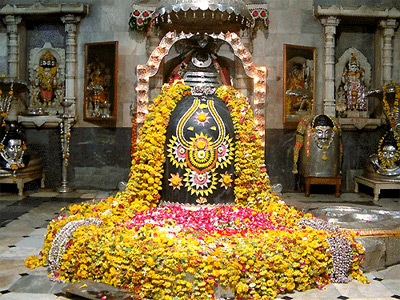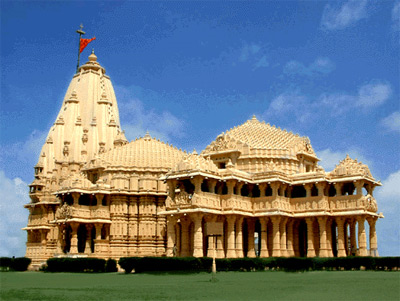Prabhupada: According to Vedic principle, the sudras, they should not be given more money, the worker class. Now the worker class is given more money. So what they'll do? They'll produce drunkards. That's all. In America, it is evident. They do not know how to use money. So therefore we see, fifty-two percent drunkards in your country. Eh? What is the percentage?Devotee: I'm not sure, Srila Prabhupada.
Karandhara: It's probably close to that.
Prabhupada: Eh? At least fifty-percent. Eh?
Karandhara: Drunkards, debauchers.
Prabhupada: Yes.
Karandhara: Criminals.
Prabhupada: Harer nama harer nama... [Cc. Adi 17.21]. What is the time?
Hrdayananda: Quarter to seven.
Prabhupada: Oh. So we can...?
Karandhara: We can walk around a little bit.
Prabhupada: Oh, yes.
Umapati: So how... Is it a waste of time then to present Krsna consciousness philosophy to someone who believes in doing your own thing? Do you think that that is a...?
Prabhupada: No. It is, it is... We should push Krsna consciousness as disinfecting agent. They're all infected, the whole world. So by chanting you disinfect.
Umapati: Just by our presence chanting then?
Prabhupada: Yes. Therefore chanting is so important. Philosophy later on. First of all, ceto-darpana-marjanam [Cc. Antya 20.12], cleansing the heart.
Devotees: Jaya.
Prabhupada: Cleansing the heart. So by hearing this chanting their heart will be cleansed gradually. Then they will understand the real position.
Umapati: Oh. Jaya.
Hrdayananda: Oh, Krsna.
Prabhupada: So we have to do this chanting, not sit down in a solitary place, chanting himself. No, not like that. You are to vibrate the sound for the benefit of others.
Umapati: That is the mystical process of this movement.
Prabhupada: Yes, yes. So that their heart may be cleansed and they can understand. And if I sit down in a solitary place, for my benefit, that may be his benefit, but it is not very high class engagement. He must sacrifice for others. Pararthe prag utsri, utsri(?). That is the Canakya Pandita's moral instruction, that "Everyone should sacrifice for the Supreme." Caitanya Mahaprabhu is God Himself. He comes down to preach, to become sannyasi, and to take so much trouble all over India and everywhere, and giving instruction and sending men, "Go, go, go, go." What? Why you...? He's perfect. Why He's coming? He doesn't require. No. For the benefit of others, we must follow the footsteps of Caitanya Mahaprabhu. (aside:) That's all right. Why water is here?
Karandhara: I don't know, Prabhupada. It's a low spot.
Prabhupada: A Vaisnava's first qualification that he's unhappy by seeing others unhappy. Vaisnava cannot be unhappy. That Prahlada Maharaja says, that "I have no problem. I am unhappy seeing these people who are simply engaged in false activities and they do not care for Krsna consciousness. Therefore I am unhappy." This is Vaisnava's qualification. Not that "I am saved. That's all right." That is materialism. "Let others go to hell. I am saved." That is materialism. A Vaisnava should think always, "Oh, so many people are suffering. What I am doing for them?" That is Vaisnava. Para-duhkha-duhkhi.
Svarupa Damodara: That is also said by scientists. They also say that "People are suffering. So we are trying to make them happy."
Prabhupada: That's all right, but if you do not know, how you'll make them happy? You'll create havoc.
Yasomatinandana: Janma-mrtyu-jara-vyadhi [Bg. 13.9].
Prabhupada: Yes, you do not know how to make them happy. First of all learn how to make them happy. You cannot manufacture your program to make them happy. That everyone is doing. But the more they are acting, the world becoming in chaotic condition. You know what is the standard of happiness, how to make them happy; then you can work. If a medical man, he has never seen a medical college and if he wants to treat patient, what is this?
Hrdayananda: A criminal.
Prabhupada: Yes. Quack. He must know how to make them happy. That is first business.
Yasomatinandana: Jaya, Srila Prabhupada.
Prabhupada: Hare Krsna.
Karandhara: Thank you, Srila Prabhupada.
Prabhupada: Jaya.
Hrdayananda: Jaya. All glories to Prabhupada. (Prabhupada gets in the car)
Prabhupada: [break] ...basic disease. He has made himself voluntarily under the clutches of maya. And maya's business is to give trouble. That's all. Otherwise, he's free, but he has voluntarily accepted the custody of maya. Yaya sammohito jivah. Sammohitah means bewildered. Jiva, the living entities. Atmanam tri-gunatmakam. Everyone is identifying, "I am American," "I am Indian," "I am this body," "I am that body." This is identification with maya. Atmanam tri-gunatmakam. Tat-krtam cabhipadyate. And as soon as he becomes under the clutches of maya, he'll act according to the dictation of maya. Tat-krtam cabhipadyate. [break] ...to see their Los Angeles Zoo? Why they're advertising?
Sudama: The Los Angeles what, Prabhupada?
Hrdayananda: Zoo.
Prabhupada: Zoo.
Sudama: Oh yeah?
Karandhara: It's not a very good zoo.
Sudama: No, it's not.
Karandhara: Just a small little one.
Hrdayananda: The big zoo is in San Diego.
Prabhupada: Eh? No, zoo in the Africa.
Sudama: Oh yeah?
Prabhupada: Yes. (laughter) No, actually they go. There is a national zoo. Thousands of... Practically Africa's main income is from the tourists.
Srutakirti: Tourism.
Prabhupada: Yes. People go to see. You'll, you'll drive your car. You'll find lions, elephants, or...
Srutakirti: Recently one of Brahmananda's men had an accident by hitting some animal on the road. Large animal, I think it was.
Prabhupada: Oh, what accident?
Srutakirti: One of the vans. One of the devotees ran into an animal on the road.
Prabhupada: Accha?
Srutakirti: I'm not sure what it was.
Prabhupada: No, the national garden means there is arrangement. The animals are free, roaming. But you can go with your car and...
Hrdayananda: Oh yes.
Prabhupada: And they cannot attack within the car.
Sudama: No.
Prabhupada: But if you come out, they'll attack. The lions are there, elephants are there. [break]
Sudama: Not very cold?
Prabhupada: Not very cold.
Sudama: No, no. Compared to Hawaii, it is very cold.
Prabhupada: Eh?
Sudama: Compared to Hawaii, it is very cold.
Prabhupada: Oh. Hawaii is very pleasant.
Sudama: Yes, now it is eighty-five degrees every day.
Prabhupada: Oh.
Sudama: It's wintertime now.
Prabhupada: And summer?
Sudama: Summer's very hot. Hundred and five.
Prabhupada: But there is rainfall.
Sudama: Yes.
Prabhupada: Summer.
Sudama: Yes. There's quite a bit now. Sometimes in the winter it rains. So that one devotee brought up the point of the philosophy of "Do your own thing," and that's what the devotees were instructed in Hawaii to do. When they closed the temple, Gaurasundara just said, "Now everyone go and do your own thing for Prabhupada."
Prabhupada: If he does Prabhupada's work, then where is the own thing?
Sudama: Yeah, right. There's...
Prabhupada: "Do your own thing on behalf of Prabhupada." So if he wants Prabhupada, he must abide by the order of Prabhupada.
Sudama: Yeah. My thing is your thing. Actually, I have nothing of my own.
Prabhupada: No, they have been misguided. But temple closing was very irresponsible... [break] ...house many years.
Sudama: Many years. (end)














